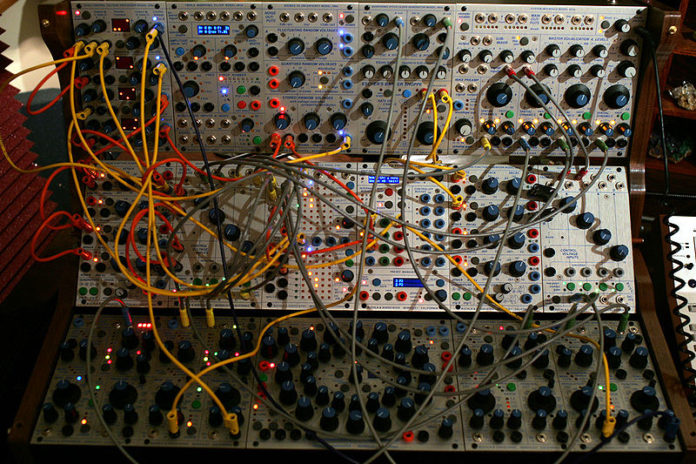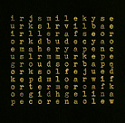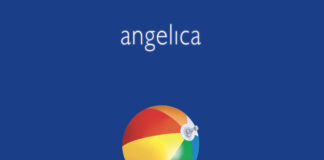
Nonostante i recenti progressi nelle tecnologie musicali, i sintetizzatori analogici hanno attirato un crescente interesse tra i musicisti e i sound artists che apprezzavano le loro peculiari caratteristiche. Tra i sistemi musicali analogici risorgenti si distingue il sintetizzatore modulare Buchla, un massiccio strumento a stato solido senza tastiera, con una distinta interfaccia simile ad un centralino. Il sintetizzatore Buchla, che è stato usato per le classiche opere di sperimentazione elettronica come Silver Apples of the Moon di Morton Subotnick e Alien Bog di Pauline Oliveros, può anche essere ascoltato nelle recenti pubblicazioni di Carya Amara, Benge e Alessandro Cortini.
_________________
The 21st century may be known as the digital age, but musically it is a digital age with an asterisk. Despite recent advances in music technologies analogue synthesizers, which seemed to have reach the point of extinction in the 1990s, have been attracting increasing interest among musicians and sound artists appreciative of their peculiar characteristics. Among the resurgent analogue music systems is the Buchla modular synthesizer.
The classic Buchla system, a solid-state keyboardless instrument with a distinctive switchboard-like interface replete with protruding wires, knobs, touch-sensitive pads and other moving parts, epitomizes electronic music’s heroic age of discovery. The system was developed by Don Buchla, a West Coast engineer who became associated with the innovative San Francisco Tape Music Center in the early 1960s. Buchla, who was trained as a physicist at the University of California, Berkeley and worked on particle accelerators at the Lawrence National Laboratory, was also interested in electronic music. Buchla had a one-track Wollensack tape recorder he was using to create musique concrete; after having attended concerts at the SFTMC he met founders Morton Subotnick and Ramon Sender, who were looking for an engineer to build an electronic “music easel” to replace tape as a medium for creating electronic sounds. Working with Subotnick and Sender, Buchla came up with a modular, voltage-controlled system that used touch pads rather than a keyboard. (Sender, trained as a pianist, had wanted a keyboard, but Subotnick argued in favor of the less conventional touch interface, which Buchla favored as well.) The system was finished in late 1964, predating Robert Moog’s synthesizer by a few months.
The Buchla was used to create classic electronic works by Subotnick, Sender and fellow SFTMC member Pauline Oliveros. Subotnick’s SilverApples of the Moon, released by Nonesuch Records in 1967, was performed on a Buchla commissioned by New York University, where Subotnick had a residency after having moved from the West Coast in 1966. The piece takes a set of quintessentially “electronic” sounds—for example, inharmonic timbres resembling metal or glass leavened by oscillating hums—and arranges them in a restless motion reminiscent of classical counterpoint. The overlapping fragmentary phrases bear a family resemblance to the pointillistic serialism of the period, but the counterpoint is more centered on timbre than on line. And the sequencer, which Subotnick has described as being the heart of the Buchla system, establishes rhythms quite foreign to contemporary serial works. Oliveros’s Alien Bog (1967), recently issued by Pogus Records, was performed on the original Buchla Music Box built for the SFTMC. Oliveros draws from an assemblage otherworldly sounds, which she lets linger in thick, generally three-layer textures. The piece is structured by a repeating motif made up of a two-place rhythmic phrase into which different sounds are inserted. In spite of the unconventional nature of the sounds, the effect of the piece is meditative thanks to the unhurried pace of Oliveros’s shifting of voices.
The exploration of novel timbres afforded by these and other electronic works of the period helped open up and redefine the palette of sound colors available to composers and performers then and since. That was an intended consequence of these experiments, since the Buchla systems were designed to create new sounds rather than to imitate existing ones—even the sounds created acoustically with the extended instrumental techniques that were burgeoning at the time Buchla was developing his synthesizers. This interest in expanding the boundaries of musical and other perception was something Buchla continued to pursue even outside of the SFTMC, whether in supplying music for the Acid Tests and Trips Festival or in designing the three-module sound system for Ken Kesey’s bus Further.
In recent years the sound worlds of the Buchla analogue systems have appealed to a new generation of artists. As three recent releases show, the Buchla modular synthesizer isn’t simply a relic of the historical avant-garde but instead is a still-effective platform for composers interested in creating music centered around timbre, texture and rhythm.
Sensitivity, a release by electronic musician Kevin Busby (performing under the name Carya Amara), was recorded on a Buchla system while Busby was a guest composer at the EMS Elektronmusikstudion in Stockholm, Sweden in June 2014. Consistent with the spirit of the early SFTMC experimenters, Busby works with a set of sounds distinctively electronic in nature. Certainly, at one level Sensitivity can be heard as a collection of the audio signatures of the past’s future—the buzzes, chirps, clicks, hums and whirrs of 1960s science fiction machinery. But these are only the building blocks Busby uses to construct well-ordered and balanced aggregates. The title track provides a good example of how he does this. It begins with a slowly undulating drone that changes timbre, adds lines to become polyphonic, and even at one point implies an alternating I-IV chord cycle. Underneath it all is a throbbing pulse for rhythmic cohesion.
Benge—UK electronic musician and producer B.D. Edwards—is another artist delving into the Buchla’s potential. His Forms 1, a twelve-track release issued in late 2013, was created on the Buchla 100. The pieces make use of the Buchla’s sequencing module, which creates brief, repeating rhythmic/melodic motifs—typically of one or two bars’ length—that serve as the foundation for the compositional superstructure. Although the tracks feature regular rhythms and recognizable melodies, the timbres are archetypically electronic and not to be confused with “naturally” occurring sounds. Further along these lines, Italian-born musician Alessandro Cortini, best known for his work with Nine Inch Nails, has released a series of double LPs of music using the Buchla Music Easel and the Buchla 200e. Cortini’s timbral experimentation exploits the unique characteristics of analogue sound synthesis within the context of rock song conventions.
 As these and other recent releases show, the analogue modular synthesizer revival is more than a nostalgic disinterment of old novelties. There are solid artistic reasons for working with these systems even—or especially—in a digital world. Analogue systems have built-in limitations that when looked at the right way are creative assets rather than liabilities—they embody an aesthetic of imperfection. Their inevitable sonic distortion and instability of tuning add a degree of chance and variability that in its own way is similar to the subtle unpredictability of response of an acoustic instrument—or the fallibility of humans more generally. In a sense these imperfections let an image of the human factor back into electronic music, even if surreptitiously. It isn’t the past’s notion of the future that these systems preserve, but a trace of the artist’s hand made present in the often-unpredictable creative act.
As these and other recent releases show, the analogue modular synthesizer revival is more than a nostalgic disinterment of old novelties. There are solid artistic reasons for working with these systems even—or especially—in a digital world. Analogue systems have built-in limitations that when looked at the right way are creative assets rather than liabilities—they embody an aesthetic of imperfection. Their inevitable sonic distortion and instability of tuning add a degree of chance and variability that in its own way is similar to the subtle unpredictability of response of an acoustic instrument—or the fallibility of humans more generally. In a sense these imperfections let an image of the human factor back into electronic music, even if surreptitiously. It isn’t the past’s notion of the future that these systems preserve, but a trace of the artist’s hand made present in the often-unpredictable creative act.





